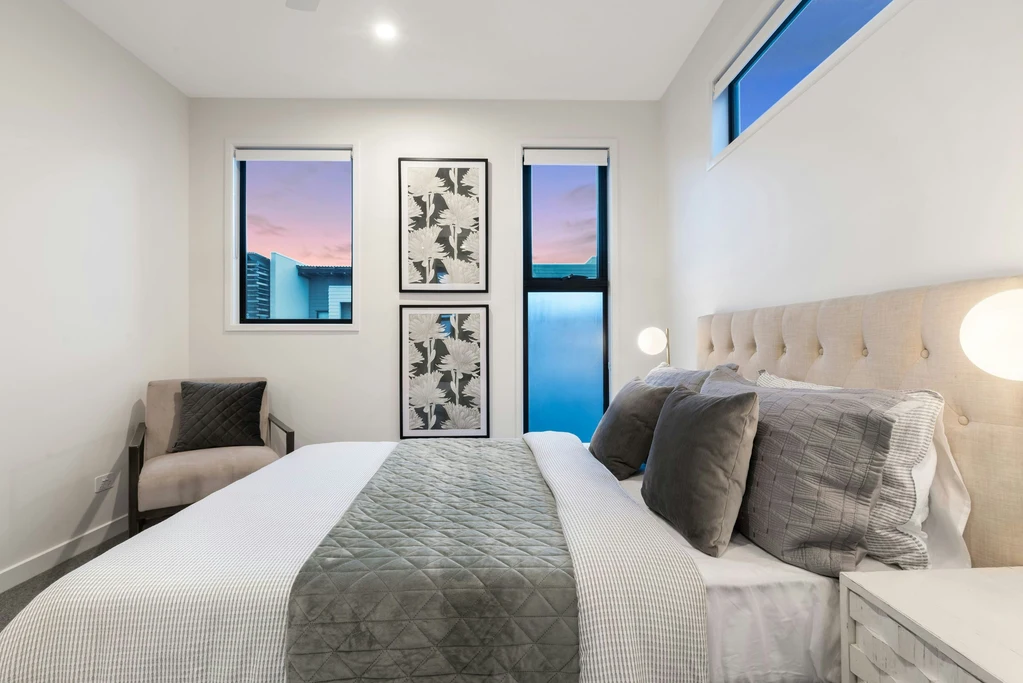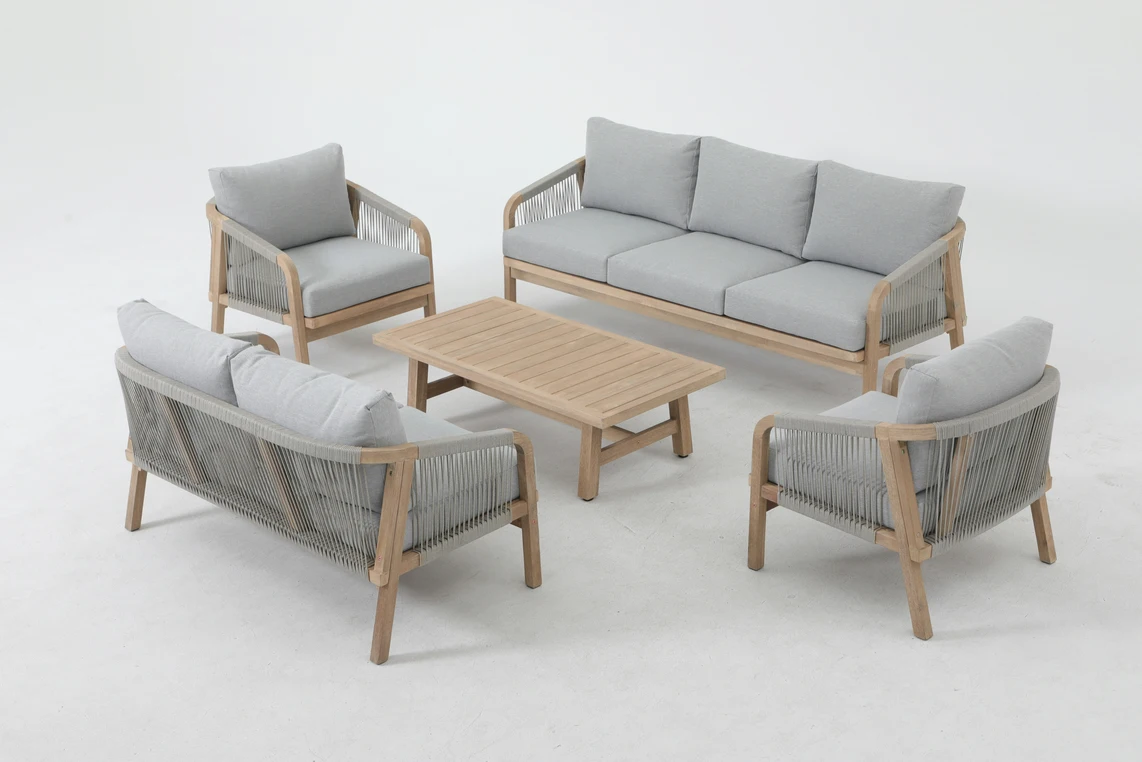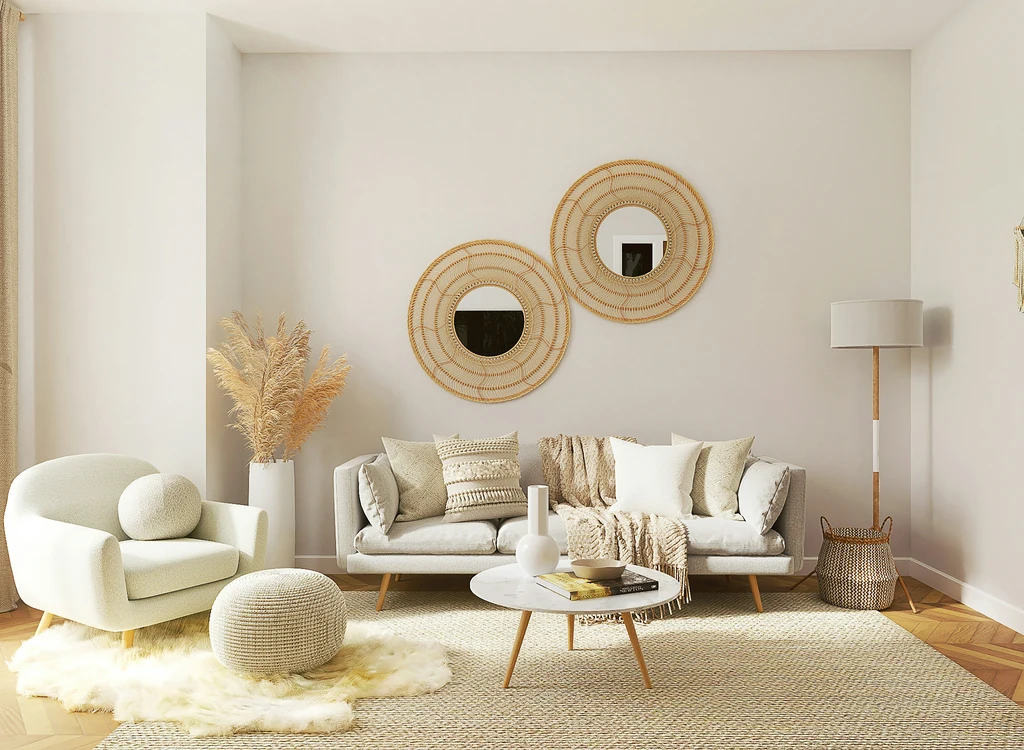Symmetry has long been a foundation in design, from ancient architecture to modern interiors. But when it comes to the spaces we live in every day, symmetry in furniture arrangements does more than just look pleasing. It has a profound effect on how safe, comfortable, and relaxed we feel in our own homes. Balanced spaces give the human brain a sense of order and predictability, and in turn, that calmness can reduce stress and enhance well-being.
This blog explores why symmetry matters, how to achieve it without being boring, and why balanced layouts can be your secret weapon for a more comfortable home.

Why Symmetry Feels Natural to Us
Humans are naturally drawn to symmetry. In nature, many things around us are symmetrical—our own bodies, leaves, flowers, and even animals. This familiarity creates an unconscious comfort when we see symmetry replicated in our environments. In furniture design, symmetrical arrangements reduce cognitive load because our brains don’t need to “work” as hard to make sense of the space.
When a living room, dining area, or bedroom has balance, the eye travels smoothly across the room. This eliminates tension and contributes to a soothing atmosphere, which is why symmetry in furniture arrangements often leads to lower stress levels.
The Psychological Benefits of Balanced Spaces
Symmetry doesn’t just make rooms look neat—it impacts how we feel and behave. A well-balanced layout can:
- Reduce Anxiety: Spaces that are cluttered or uneven create visual tension, which increases stress. Symmetry creates harmony and restores calm.
- Improve Focus: Balanced environments reduce mental distractions, making it easier to concentrate on reading, working, or even relaxing.
- Promote Restfulness: Bedrooms with symmetrical furniture arrangements encourage deeper sleep because the environment feels stable and predictable.
- Enhance Mood: Entering a room that “feels right” boosts positive emotions and a sense of control.
Symmetry in Furniture Arrangements for Different Rooms
Different rooms call for different types of balance. Here’s how symmetry works across common spaces in the home.
Living Room
In living rooms, symmetry in furniture often means placing sofas, chairs, and tables in mirrored positions. For example, two identical chairs facing each other across a coffee table create equilibrium. This setup not only reduces stress but also encourages conversation and connection.
Bedroom
Bedrooms benefit greatly from symmetrical arrangements. Nightstands with matching lamps on each side of the bed, balanced artwork above the headboard, and rugs centered beneath the bed create a sense of order that makes the space restful and inviting.
Dining Room
Dining spaces rely on centered tables and evenly spaced chairs. Balanced wall décor or lighting above the dining table reinforces this harmony, making meals feel more formal, comfortable, and connected.
Home Office
Even in workspaces, symmetry plays a role in reducing stress. A centered desk with matching storage or shelving on both sides creates a workspace that feels controlled, helping you remain focused and productive.

Symmetry vs. Asymmetry: Finding the Right Balance
While symmetry in furniture provides comfort, too much of it can feel rigid or uninspired. That’s where asymmetry comes in. Designers often use a mix of both to create interest while maintaining balance. For example, you might have symmetrical furniture arrangements but add asymmetrical accessories like different-sized vases on a mantel. This blend keeps the room dynamic without sacrificing harmony.
The goal is not perfection but balance. As long as the overall layout feels intentional and visually stable, your space will reduce stress and enhance comfort.
Practical Tips for Achieving Symmetry in Furniture Arrangements
- Start with the Center Point: Identify the focal point of the room—like a fireplace, window, or TV—and arrange furniture equally on both sides.
- Pair Furniture Pieces: Use matching nightstands, chairs, or lamps to create mirrored layouts.
- Use Rugs as Anchors: Center rugs beneath major furniture groupings to ground the room in symmetry.
- Balance Height and Proportions: Make sure tall items like bookshelves are mirrored or balanced with equally tall décor on the opposite side.
- Keep Pathways Clear: Symmetry should enhance flow, not block it. Ensure pathways feel open and equal on both sides.
The Stress-Relief Factor in Symmetry
Stress reduction comes from predictability. A balanced space eliminates the small but constant decisions your brain makes when it processes uneven or cluttered rooms. Instead, you walk into a room and feel instant harmony. Over time, this subconscious ease translates into lower stress levels and greater comfort in your daily life.
The Future of Symmetry in Modern Homes
As modern homes embrace minimalism, symmetry in furniture arrangements is becoming even more valuable. Minimalist spaces often rely on balance to avoid feeling too empty or sterile. In open-concept layouts, symmetry anchors zones like dining or lounge areas, keeping the home cohesive.
We may see even more innovative uses of symmetry in smart homes, where lighting, furniture placement, and décor all work together to create balanced environments tailored to human psychology.

Frequently Asked Questions (FAQs)
1. Why does symmetry in furniture arrangements make me feel calmer?
Because your brain processes symmetrical layouts more easily, it reduces visual stress and creates a sense of harmony, making you feel calmer.
2. Can symmetry in furniture work in small spaces?
Yes, small spaces benefit greatly from symmetry because balanced arrangements make them feel more organized, open, and less overwhelming.
3. Is perfect symmetry necessary, or is near-symmetry enough?
Near-symmetry is often enough. As long as the room feels balanced, your brain will register harmony without needing everything to match perfectly.
4. How does symmetry in furniture affect sleep in bedrooms?
Balanced bedrooms with matching nightstands, lamps, and centered beds create predictability and calmness, improving sleep quality.
5. Can asymmetry in furniture ever reduce stress?
Yes, when used intentionally. A touch of asymmetry keeps spaces interesting without creating chaos, which can still feel soothing when balanced properly.
6. How do I add symmetry without buying new furniture?
You can rearrange existing pieces, pair items creatively, or use accessories like lamps, cushions, or rugs to create mirrored effects.
7. Does symmetry apply only to furniture, or also to décor?
Both. Décor like art, lighting, and accessories can reinforce or break symmetry. Balanced artwork or lighting often enhances harmony.
8. Can symmetrical layouts feel boring?
They can, which is why designers often mix symmetry in furniture arrangements with asymmetrical décor to keep the look dynamic yet comfortable.
9. Is symmetry a universal design preference?
While cultural differences exist, humans across the globe are naturally drawn to symmetry because it’s common in nature and linked to comfort.
10. How can symmetry help in home offices?
Balanced layouts with centered desks and evenly distributed storage create a sense of order that reduces stress and improves productivity.
Want more blogs like these?
Check out more Living Spaces ideas on Designs24hr to discover how design psychology can transform your home into a place of balance, comfort, and reduced stress.







